Inside the Tank | Pipeworks’ Gerrit Lewis
If you’ve walked into any beer store in Chicago, and now Colorado or New York, you’ve probably seen a Pipeworks beer. Known for their unique artwork and clever names, their beers have become well-known in the city and are sought after by craft beer fans in other states. From big IPAs to a barrel-aged program that is gaining notoriety quickly, Pipeworks Brewing Company is one of the best-known breweries in Chicago. They just moved into a massive new facility recently, so I went out there to talk with Co-Founder and Brewer Gerrit Lewis.
The story of Pipeworks begins with you and Beejay meeting while both of you worked at West Lakeview Liquors. But before that how did you get into beer?
While I was going to school at Loyola, the convenience store had some Czechvar and maybe all the different colors of the Sierra Nevada’s six packs and I went to that store every week and would try something different, but it was fairly limited in selection.
However, the first time I walked into Binny’s, just seeing a massive row of beer, I would notice all the unique labels and packaging. Eventually I was going everyday and then I was going to multiple beer stores everyday to try new stuff. That’s when I saw that West Lakeview was one of the top beer stores in the world and it was right down the street so I figured I would stop in there. They were looking for workers and it sounded like fun. Beejay did the same thing two months later.

How did the idea for a brewery get started between the two of you, considering that neither of you had any commercial brewing experience?
It must have been Dark Lord Day in 2008 and Beejay and I are just standing in line and talking the whole day with other people who have since gone on to start breweries as well. Beejay was an avid home brewer and I was an avid beer drinker so on the drive home we just said “Let’s do this!” We tried some of Beejay’s home brew and took it from there.
Neither of you had any commercial brewing experience. How did you prepare to open a brewery?
When Beejay and I had the initial idea in 2008 I was still in school. In 2009 we ended up apprenticing at what was then the number one brewery in the world (De Struise Brouwers) rated by Rate Beer. We sent Urbain (the owner) a message and he’s out in the northwestern part of Belgium. He said to come on out. I was still in school so I couldn’t go right out for the entire trip but Beejay went out there for close to three months and did an apprenticeship.
That was January through March of 2009. I wasn’t going to class much and failing almost all of my courses, I should have just gone. It would have been cheaper. We were on Skype six hours a day. Beejay would be telling me about what they did that day. They would drive to the Netherlands to pick up empty kegs, washing bottles, doing label stuff, brewing beer, packaging beer – anything really. We really kind of hashed out the entire brewery during those three months over Skype. I did go out there for the last two weeks where we presented some of our collaboration beers we had done with brewers out there. Well Beejay brewed and I remotely collaborated on.

You did a Kickstarter and got 492 backers to give you over $40,000 when you were looking for $30,000 – how were you able to be successful when craft beer wasn’t that popular yet?
Chicago is ripe for it. Metropolitan was just opening and along with Half Acre that was really kind of it in Chicago. We were in the right place at the right time. It helped that we did have some professional friends in the industry that we had met while working at West Lakeview and during the apprenticeship in Belgium.
What went through your head when you exceeded your goal on Kickstarter?
It’s actually not a lot of money to work with. You can hardly even get an architect to do anything for $40,000. We knew we had to use this money as wisely as possible. As the home brewing community was getting more serious, more people began manufacturing equipment. Luckily there was a new manufacture in Grand Rapids Michigan called Psycho Brew where we could essentially get a three-barrel brewhouse. It’s basically a bigger home brew system that you could use to make just enough beer to go at this commercially.
The other thing then was location. Chicago is not the most expensive place in the world but it’s definitely not the cheapest in terms of real estate. It was important for us to be in Chicago and not be outside of the city. What’s the point of being a Chicago brewery if you’re just on the outskirts?

How did you find your original location?
Finding a location was the most stressful part. Every building we looked at, even if it was a burned down building that needed insurance repairs and things like that was $3,000 a month and we knew we would run out of money real quick if we tried to do anything like that.
We found a landlord that was willing to work with us. The building wasn’t in great shape and we managed to get six months rent abatement. They gave us the building as is and didn’t make any improvements to it. We had six months from signing that lease which was around July 1, 2011 to get the brewery running or we weren’t going to make it.
Once we found the right location we had to go about the task of getting more money. Everyone said to do another Kickstarter and we thought that was weird. There were enough people writing us everyday wanting to be apart of this. We needed more money to make it to the finish line so we opened it up to another 400 people and in about a month or two we raised another $40,000. Between that and about $30,000 that our families lent us, we opened up with about $110,000. If you asked me to do that again today I would say not a chance. I don’t know how we did it but somehow we made it.
Pipeworks makes beers with ingredients you don’t see too often how do you come up with the beers?
Back in 2008-09 that was very unique. I think today though there aren’t those types of constraints anymore. Brewers feel free to experiment with unusual or uncommon brewing ingredients. We definitely kind of made beer that would stand out at the time but that wasn’t the intention to be known for using crazy ingredients.
We did get known for Pastrami on Rye which turned people off because they thought it would taste like meat but we told them it was a sweet beer made with the same spices you’d cure pastrami with. There’s no meat in it. There was never any intention to do something for shock value. I know some people do that, like use yeast from places you’re not suppose to use yeast from like somewhere on your body.

Talk about the bottle and can artwork because Pipeworks is known for that.
Beejay went to school for art and he’s just a naturally talented artist. His dad was a world-renowned tattoo artist so Beejay grew up with art. Chicago has an amazing amount of artists that live here too, so there’s a lot to tap into. There was no specific design aesthetic that we were going into it with, it just kind of materialized overtime. It took its own course. When we went to do cans, and by that time we had been in business for three years, the aesthetics were already laid out for us.
Did Beejay design all the labels?
No – we were actually so busy trying to get the brewery together early on that we kind of reached out to some of my friends and Beejay’s friends and asked them if we could use their art. When things settled down then Beejay was able to design a good portion of the labels. Beejay has always been the art director though. He’s definitely done a majority of them now, almost all hand drawn.

You started brewing in 2012 – how has the craft beer industry changed from that time to today?
Multiple ways. I think there is some greater realization and, I think that it was kind of forecasted, that this is absolutely a business. The idea that we’re all in this together only gets you so far. As the space gets more and more crowded there is going to be some failures. Consumer expectations will be higher. Is there sub-standard beer out there that people will continue to drink it and accept it or will it get phased out. I think that’s yet to be seen.
You mentioned that the space is getting more crowded. With more and more breweries opening up how does Pipeworks stay relevant?
I think we’re seeing more regional and local beers. Before, Binny’s had access to just about any beer from around the country. I think we’re seeing some constriction because some brands realized they don’t need to ship their beer here anymore because there’s a brewery locally selling beer that’s just as good but fresher. I think a lot of the growth is happening that way where before I think breweries would grow just by putting their beer into more markets.
Look at all the steakhouses that are opening in Chicago. You think “Why do we need more steakhouses because they’re all similar?” The white tablecloth, the shared sides, but I guess Chicago can really support that many expensive steakhouses so I guess Chicago can support breweries of all different kinds.
We’re having the chef-driven breweries with brewpubs now, we’re seeing the packaged-beer breweries like ourselves and now we have breweries that have both. There’s a lot of contract breweries as well and some nano-breweries that will stay a nano-brewery. Everyone’s trying to come at this from a different angle so it’s very unique to see. This is also the third largest city in the country so we can support it.
Pipeworks’ beers have a following. What goes through your head knowing that you’ve created this following?
I think that’s a really tough question. It’s very hard to get wrapped up in that stuff. We’re very focused on growing to a point where we can pay our bills and be sustainable. We’re heads down and not immersed in any kind of hype like that.
I think when we first started I was coming at it from a beer-geek perspective. We were those guys. We waited in line at Dark Lord Day but that was eight years ago now. The first year we delivered all the beer by hand. We had no employees so we went to all the tastings and then something happened that everyone said would happen that we didn’t want to happen — eventually we had to get people to do those tasks for us.
You want to be the face of the brewery and you want to be out there with all the beer drinkers enjoying the beer with them but at some point in running the business that doesn’t become possible anymore. Luckily now that we’re at this point where we’ve grown to where we think we’re at a sustainable spot we can take a step back. Someone else can do some office work, someone else can do some work that Beejay had to do and now we can go back out there and enjoy owning a brewery which is a really cool thing.
How has the move to the new facility changed Pipeworks?
Moving to this facility gave us the opportunity to learn a lot. The last place was us doing a lot in a very small building. We had 15 employees in a very small space so people were working over each other. It’s been great to be in a facility this size. It just provides a lot of room for learning. We’re taking that next step. This space is about 10 times the size of our last place.
Before the new place you were mainly bombers and kegs. How important was the move to canning?
We were doing mostly bombers before, we were maybe 5% draft and towards the end of the old place we were maybe 10-15% draft. With this space it just provides those economies of scale. There would be no room for a canning line at the last place, there wouldn’t be any room to store the cans at the last place. There wouldn’t be any room for 25-foot tall tanks. Having the space really provides for that.


Everyone wants to know if Pipeworks will have a taproom?
Here’s the plan. Referring back to the last place we didn’t own that space and it’s an old building. From day one we wanted that to be a retail space. But with the low amount of money we raised it just wasn’t going to be feasible. We did really try as hard as we could.
Yes, we’ve now left that old space but we haven’t left that neighborhood. We’re still looking nearby for a place that would be feasible to put a retail space/brewpub. It’s going to happen. It’s not might – it’s going to happen.
We’ve been actively touring locations for two years and I know everyone has heard about the taproom for years but a big part of that happening was getting into this location, the new production facility, and getting this running first. If we tried to do both at once neither were going to happen. So we focused on getting the new production space and then we can turn our attention to the retail space. We’re hoping to finalize a location this summer. We have a spot in mind.
Talk about the barrel-aged series. How has the barrel program evolved?
When we started the barrel-aged program we knew we had to be patient. You’re taking revenue that you might need to pay your rent or employees and you’re stashing it away thinking that I don’t need this money right now, I’ll get it later. The first couple of years we were only able to put a couple of beers into barrels. We learned quickly what to do and what not to do. There’s a lot of noise if you have 100 barrels and 80 turn out great. When you only have a couple of barrels you quickly see what needs to be changed.
We were fortunate to bring on Mike Schallau. We gave him the joking title of master of barrels for an interview he had to do. He needed a title and it has kind of stuck. He has the most knowledge of whiskey of anyone i have ever met. He naturally would be the perfect person to start our barrel program and he did just that and it’s been really cool.

You’re in Chicago, Denver and New York. What are your future distribution plans?
There might be plans to go to other states. Obviously we wanted to make sure Illinois is not shorted any beer. When Illinois is maxed out of all of our beer they can drink you just can’t go to another state and say “take this.” You have to start early to build those relationships and test the waters.
We get a lot of phone calls from around 15 other states and a couple of them are looking like attractive beer markets that kind of get overlooked by some of the bigger guys. We’re thinking that those could be places that could use a Ninja vs. Unicorn. We never want to go to a place and then our beers sit on the shelf in a place that has lots of other great IPAs already. There’s no reason to buy ours if you can buy another that was made just down the road.
What are your thoughts on AB-InBev’s recent purchases of craft breweries?
It’s really hard for me to know. I haven’t been in this industry long enough. I know people can make assumptions about what their intentions are. I’ve heard everyone else’s comments and theories and as a business guy I see exactly what they are doing and why they are doing it. What this means 4-5 years from now I have no clue.
Is there anything that can threaten the craft beer industry now?
Absolutely. Here’s the thing, you have a lot of people in a very fast growing industry that do not understand the supply chain. At AB-InBev and MillerCoors they have guys that understand that very well.
We’re dependent on raw ingredients. We’re dependent on the economy and the weather and anything that could disrupt the flow of ingredients we need to make beer is very serious. People only think that hops are scarce, but it can be very difficult to get the certain malt that you want. I think that’s something that people entering the market right now might not appreciate and realize. They might have written a business plan this way but what happens if the price of commodities double over the next two to three years. We’re already seeing some hop prices double.
What is your favorite Pipeworks Beer? If you’re not drinking Pipeworks what are you drinking?
I love them all…except a few. There’s probably a good 20 or 30 that I really really love. There are things that we brewed once that I think are amazing but no one else likes them so we’ll never brew them again. There are things we have every day like Ninja vs. Unicorn which we have had since day one — some days I love this beer and others I’m like “ehh I want to change this or improve that.”
If I’m not drinking Pipeworks — I love New Glarus. Also any kind of unfiltered lager or hoppy lager.
Based on social media it looks like Pipeworks is a laid back place to work. What’s the atmosphere like?
We all trust each other a lot. We’re all problem solvers. That’s a big part of being in a brewery. Everyday is going to go a little bit different. We are laid back people working in a somewhat stressful environment.
We’re a family which is really cool. Almost everyone here volunteered for us for about six months. It was like “Why do you guys keep coming here?” They kept showing up everyday and when we needed to hire people it was easy because they already knew what they were doing and they were already here so I guess you’re hired. That literally is how almost everyone got their job here.

What’s the future for Pipeworks?
I really would love to have a bar where I could get my own beer. I want to sit at a corner of a bar and eat something and drink something and that would be cool. We touched on this a few questions ago but a brewpub. One of my best friends is Drew Fox (18th Street) and I got to experience that with him as he built out his first place in Gary. I sat right there on the corner of the bar with him thinking this is really cool.
Mike Zoller is the Chicago Editor for PorchDrinking.com. Follow him on Instagram: @chicagobeer and PorchDrinking Chicago’s Twitter feed: @porchdrinkchi
-
great article. ive followed the brewery since the kickstarter and they’ve impressed me at every turn


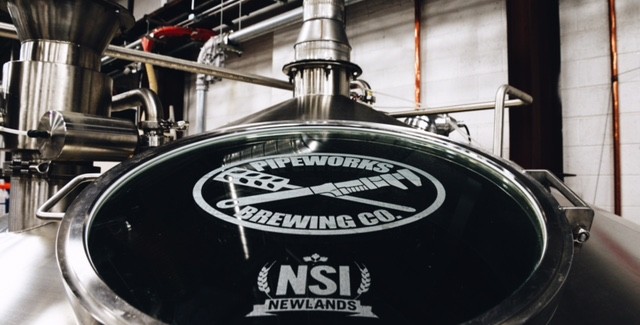
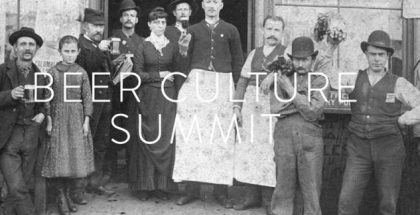
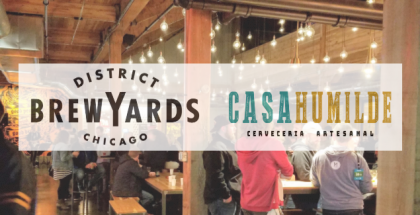
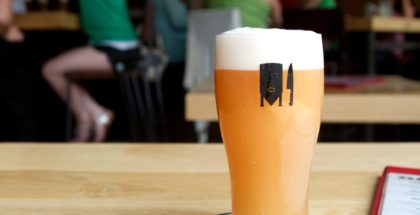
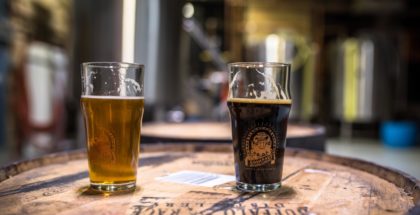
Comments